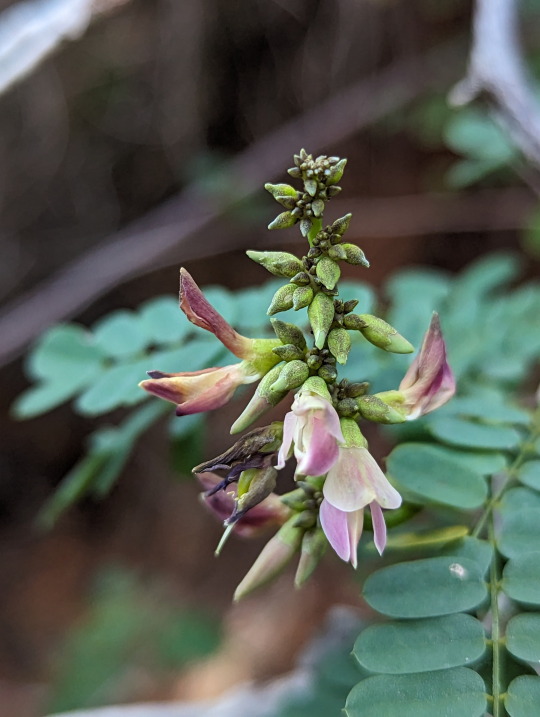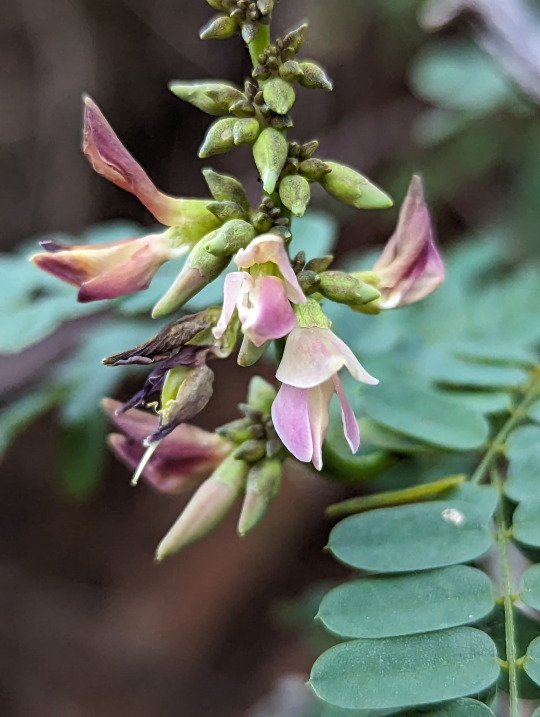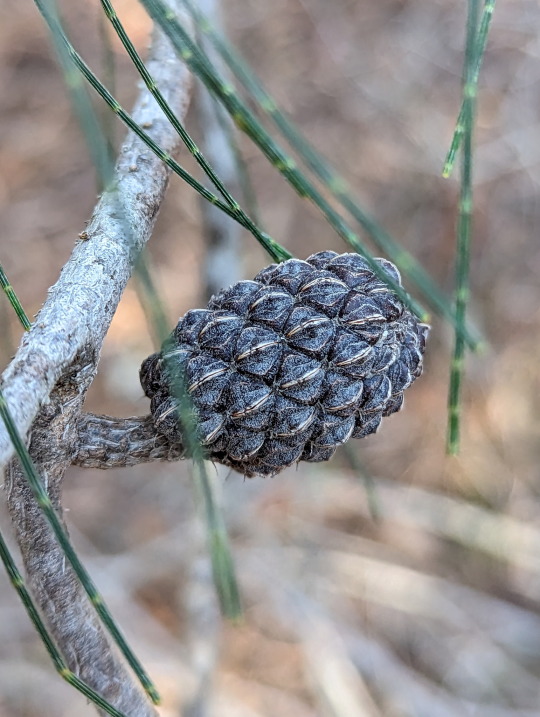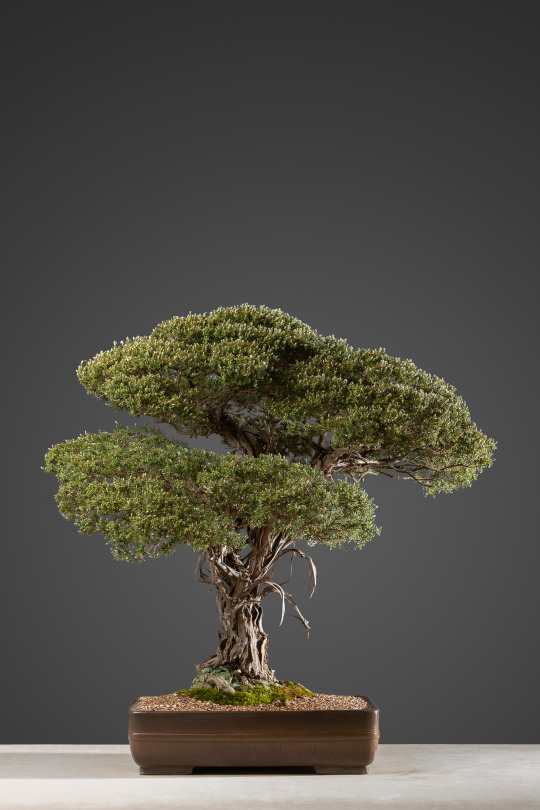#banksia integrifolia
Text


Photos 1-2 - Banksia integrifolia


Photos 3-4 - Abrus precatorius


Photos 5-6 - Allocasuarina sp.
Some plants recorded out in the bush.
11-13/09/23 - Magnoliopsida spp.
QLD:CQC, Woppa (Great Keppel Island), dry woodland
#Banksia integrifolia#Coastal Banksia#Banksias#Proteales#Magnoliopsida#Dicots#Angiospermae#Flowering Plants#Tracheophyta#Vascular Plants#Plantae#Plants#Abrus precatorius#Rosary Pea#Fabales#Casuarinaceae#Sheoaks#Allocasuarina#Fagales#unidentified#botany#angiosperms
15 notes
·
View notes
Text

Banksia integrifolia 'Rollercoaster'
27-APR-2023
Melbourne, Vic
#australia#victoria#melbourne#flower#australian natives#native flowers#yellow#yellow flower#inflorescence#coast banksia#banksia rollercoaster#proteales#proteaceae#banksia#banksia integrifolia#banksia integrifolia rollercoaster#texture
5 notes
·
View notes
Text
12 Drought-Resistant Trees In Australia
In the vast, sunbathed landscapes of the Land Down Under, the challenge of cultivating flora that can endure with the help of tree loppers Sydney arid conditions is both an art and a science. This ecological endeavour is not merely about aesthetic landscaping; it's a crucial strategy for sustaining local biodiversity and preserving the natural beauty of the region. As climate patterns continue to evolve, leading to longer and more intense dry spells, the importance of selecting the right species that can thrive in these conditions becomes paramount.
The following guide delves into the trees with the ability to withstand prolonged periods of dry weather. These species are not only survivors but also symbols of the strength and adaptability of the natural world, making them ideal for gardens and landscapes in areas prone to drought. By incorporating these species into our surroundings, we not only enhance the beauty of our environment but also contribute significantly to ecological conservation and resilience in the face of changing climate conditions.
Eucalyptus Gregsoniana
This species, often found in the Blue Mountains, stands out for its robustness in dry conditions. Its narrow leaves and distinct bark make it an excellent choice for water-conservative landscapes.
Brachychiton Acerifolius
Commonly known as the Illawarra Flame, this specimen is celebrated for its spectacular red blossoms. Native to the coastal regions, it's remarkably tolerant to dry spells.
Acacia Pycnantha
Known as the Golden Wattle, this flora is renowned for its vibrant yellow flowers. It's a national symbol of resilience and beauty, thriving in the harshest of climates.
Callistemon Viminalis
Often referred to as the Weeping Bottlebrush, this variety is prized for its unique, brush-like flowers. It is a favourite in gardens for attracting wildlife while requiring minimal hydration.
Angophora Costata
Resembling the more commonly known eucalypts, this species, with its twisted limbs and strikingly smooth bark, is a staple in dry landscapes, offering both shade and aesthetic appeal.
Banksia Integrifolia
The Coastal Banksia is easily recognized by its elongated flower spikes and serrated leaves. It's an iconic coastal species that can survive with very little moisture.
Corymbia Ficifolia
Often termed the Red Flowering Gum, this vibrant flora is a show-stopper with its bright red blossoms. It's a popular choice for adding a splash of colour to arid gardens.
Grevillea Robusta
The Silky Oak is distinguished by its fern-like foliage and golden flowers. This fast-growing species is a favourite among local fauna and requires little water once established.
Melaleuca Quinquenervia
The Broad-leaved Paperbark is known for its papery bark and creamy flowers. It's often found in coastal areas and is highly adaptable to dry conditions.
Allocasuarina Verticillata
Commonly called the Drooping Sheoak, this flora is notable for its needle-like foliage and ability to survive in nutrient-poor soils with minimal water.
Livistona Australis
This palm variety, native to the eastern coastlines, adds a tropical touch to any landscape. Despite its lush appearance, it's surprisingly drought-hardy.
Hakea Laurina
The Pin-cushion Hakea is a unique species with round, pincushion-like flowers. It's a striking addition to any water-wise garden, requiring minimal care.
The cultivation of these drought-resistant species is more than a gardening choice; it's a testament to the resilience and diversity of the natural world. In an era where ecological sustainability is of paramount importance, choosing plants that can endure harsh weather conditions is a step towards a more resilient and environmentally conscious approach to landscaping. These species, each with their unique characteristics and beauty, offer a glimpse into the rich biodiversity of the Land Down Under. They serve not only as a practical solution to the challenges posed by drought but also as a reminder of our responsibility to protect and nurture the environment. In embracing these species, we are not only beautifying our surroundings but also actively participating in the conservation of our planet.
This selection of flora represents a harmonious blend of aesthetic appeal and ecological wisdom, encouraging us to look beyond mere survival and strive for a landscape that flourishes even in the face of adversity. As we integrate these drought-resistant varieties into our gardens and public spaces, we contribute to a legacy of environmental stewardship, ensuring that the natural splendour of our region continues to thrive for generations to come.
Embracing these hardy species in your landscape design not only ensures a vibrant and thriving garden but also contributes to the preservation of the local ecosystem. Each of these specimens brings a unique aesthetic and ecological value, making them ideal for the challenging weather patterns of the region. By choosing these drought-resistant varieties, one can create a beautiful, sustainable environment that resonates with the natural beauty of the Land Down Under.
0 notes
Text
Top 10 Trees To Plant During Spring
Spring is a season of renewal, bringing warmth, vibrant colours, and the joy of new growth. For gardening enthusiasts and environmental advocates alike, it is all about planting trees with the help of an arborist Sydney. Planting trees not only enhances the aesthetic appeal of a garden but also provides environmental benefits, from purifying the air to attracting wildlife. In Australia, we are blessed with a diverse array of native and adaptable tree species suitable for various climates and soils.
If you're considering adding new trees to your landscape this spring, use the following guide to know what shrubs are best planted in or around your property.
Wollemi Pine (Wollemia nobilis)
An ancient tree, the Wollemi Pine was thought to be extinct until it was discovered in the 1990s. This prehistoric tree has dark green foliage and is well-adapted to both sunny and shaded locations. It’s a real conversation starter and can be a unique addition to any garden.
Golden Wattle (Acacia pycnantha)
Recognised as Australia's national floral emblem, the Golden Wattle blooms with bright yellow, fragrant flowers. Its rapid growth and ability to thrive in various soil types make it a popular choice for those looking to establish a canopy quickly.
Macadamia (Macadamia integrifolia)
Aside from producing world-renowned macadamia nuts, this tree is also an excellent choice for gardens. It has glossy, dark green leaves and sprouts fragrant, long white flowers that attract bees and birds.
Blueberry Ash (Elaeocarpus reticulatus)
A stunning ornamental tree, the Blueberry Ash boasts fringed, bell-shaped flowers in spring and striking blue berries during the summer. This tree is ideal for small gardens due to its modest height.
Illawarra Flame Tree (Brachychiton acerifolius)
True to its name, this tree lights up the landscape with its bright red flowers, making it look like it's aflame. It’s a drought-tolerant species, perfect for areas with water restrictions.
Brush Box (Lophostemon confertus)
This evergreen tree can grow quite tall and is particularly suitable for larger gardens or public parks. It has a dense canopy with glossy leaves, offering good shade, and produces small, white fragrant flowers.
Tuckeroo (Cupaniopsis anacardioides)
A fantastic tree for coastal areas, Tuckeroo is salt and wind tolerant. With its bright yellow flowers and attractive, rounded canopy, it's a favourite for both gardeners and local wildlife.
Spotted Gum (Corymbia maculata)
One of the most beautiful Australian hardwoods, the Spotted Gum, has a unique bark that sheds in patches, revealing a smooth, mottled trunk. It's both functional as timber and ornamental in gardens.
Banksia (Banksia spp.)
This genus provides various species suitable for gardens. Their cone-like flowers in shades of yellow, orange, and red are not only visually appealing but also attract a plethora of native birds and insects.
Bottlebrush (Callistemon spp.)
Characterised by their brush-like flowers that come in red, pink, yellow, or purple, these trees are a staple in many Australian gardens. They are hardy, drought-resistant, and attract bees and birds, especially honeyeaters.
When planting any tree, it's essential to consider a few factors to ensure healthy growth:
Right Place, Right Tree
Before planting, research the tree’s eventual height and canopy spread. Ensure you provide enough space for the tree to grow without obstruction.
Soil Preparation
Enrich the soil with compost or organic matter to give your tree a healthy start. Australian soils can sometimes be nutrient-poor, so amending them can be beneficial.
Watering
Newly planted trees require regular watering until they're well-established. Ensure the soil remains moist but not waterlogged. As the tree matures, reduce the frequency of watering but water more deeply.
Mulch
A good layer of mulch around the tree can retain moisture, suppress weeds, and regulate soil temperature. Make sure to keep the mulch a few inches away from the trunk.
Protection
Newly planted trees might need protection from pests or strong winds. Consider using tree guards or windbreaks where necessary.
Spring offers the perfect opportunity to beautify landscapes and contribute positively to the environment by planting trees. Whether you prefer native species or ornamental varieties, the list above provides excellent options for various garden sizes and aesthetic preferences. Happy planting!
1 note
·
View note
Photo

Day 2 — Banksia Integrifolia
The coast banksia, as it’s commonly known, grows along the east coast of Australia. One of the most widely distributed Banksia species, it occurs between Victoria and Central Queensland in a broad range of habitats, from coastal dunes to mountains.
B. integrifolia was collected at Botany Bay in 1770, by Joseph Banks and Dr Daniel Solander, naturalists on the Endeavour during Lieutenant (later Captain) James Cook's first voyage to the Pacific Ocean.
B. integrifolia produces a dark amber-coloured honey of middling quality and therefore low commercial value. Despite this, the species is highly valued by beekeepers because it produces large amounts of pollen and nectar during autumn and winter, thus helping support hives at a time when little else is flowering.
Historically, indigenous Australians obtained nectar from B. integrifolia by stroking the flower spikes then licking their hands, or by steeping flower spikes in a coolamon overnight. They also used the flower spikes as hairbrushes. Early settlers used the nectar as a syrup for sore throats and colds; and bushmen would impregnate barren "cones" with fat to make a slow-burning candle.
1 note
·
View note
Link
0 notes
Photo

New Post has been published on http://malleedesign.com.au/portfolio-st-ives-landscape-design/
Portfolio: St Ives Landscape Design
This garden in the leafy north shore suburb of St Ives was designed last year and built only 7 months ago. Part of the brief for this garden was to have plenty of year round flowers for bees and birds and given these photos have been taken in Winter, one of the most difficult seasons for capturing flowering plants I was happy to see many species out in bloom already.
Chrysocephalum apiculatum
The front garden was originally a large expanse of lawn with a deciduous Maple and some low buxom hedge. The clients wanted the complete opposite!
In the image above you can see the before garden and in the image below the after…
The lawn was removed and the gently sloping garden divided up to create 3 more manageable and useable levels.
As you step in the front gate there in a low hedge of Acacia fimbriata Dwarf ‘Crimson Blush’ which will screen the fence from the house.
The first level is an open space created to allow for an extra parking space and turning circle when parking in the car pot. This is decomposed crushed granite Deco Gold which has been planted into to blur the lines between the garden beds and hard space.
The middle level is mulch and planted out with native ground covers, shrubs and two feature trees, and houses a sandstone plinth birdbath.
The middle level will also house some bee hives in the sunny north facing spot on the boundary surrounded by tea trees.
The lowest level which leads to the house entrance is paved in sandstone flagging with two curved cortex steel edged curved garden beds framing the pathway.
Grated Grevilleas have been used as feature plants close to the house with two grated standards providing a formal element to the garden which harks back to many gardens in the area.
Grafted Standard Grevilleas
The grafted standard Grevilleas tie in well with the clipped Camellia hedge behind 😉
I am so happy with the way the grasses and ground covers have already begun to spill over the sandstone boulders.
The rear garden was designed at the same time as the front but wasn’t completed until earlier this year. This is a very shady garden which is over shadowed by neighbouring trees.
The original garden was mainly lawn with a very large Fraxinus. The clients wanted to introduce as many native species as possible to encourage wildlife into the garden.
A small fire pit area was created in the rear flat corner and the large tree removed.
The Plectranthus argentatus ‘Silver Shield’ is doing a wonderful job of quickly filling in the space and flowering its head off in the shade.
And last but not least the garden street frontage is lined with a low hedge of Grevillea ‘Winter Delight’. This can be hedged in a typical north shore fashion or left to spill over the footpath, either way it attracts attention to the modern native garden which lies behind the white picket fence!
#Acacia 'Lime Magic'#aildm_aus#Banksia integrifolia#birdbaths#Chrysocephalum apiculatum#Corten Steel#Deco Gold#Decomposed Crushed Granite#Eremohpila nivea 'Blue Velvet'#formboss#Grafted Standard Grevillea 'Deua Flame'#Grevillea 'Winter Delight'#Lomandra 'Little Lime'#Modern Australian Native Garden#Plectranthus argentatus#Red flowers#Sandstone Boulders#sandstone crazy paving#sandstone flagging#Themeda 'Mingo'
2 notes
·
View notes
Photo

Yoooooo! Behold my favourite flower. Also back to weekly updates
3 notes
·
View notes
Text
The coastal banksia has its roots in ancient Gondwana
The coastal banksia has its roots in ancient Gondwana

John Tann/Flickr, CC BY
Gregory Moore, University of Melbourne
If you fondly remember May Gibbs’s Gumnut Baby stories about the adventures of Snugglepot and Cuddlepie, you may also remember the villainous Big Bad Banksia Men (perhaps you’re still having nightmares about them).
But banksias are nothing to be afraid of. They’re a marvellous group of Australian native trees and shrubs, with…
View On WordPress
0 notes
Text




In our "Bonsai Empire 21st anniversary" series we share a post today created by: National Bonsai & Penjing collection of Australia
"The National Bonsai & Penjing Collection of Australia (NBPCA) is a partnership between the ACT Government and the Australian Bonsai Community. The Collection was officially opened on 28 September 2008 by then ACT Chief Minister, Jon Stanhope and Roger Hnatiuk representing the bonsai community. The NBPCA resided in Commonwealth Park near Stage 88 between this time and the 1st of February 2013 when it moved to the National Arboretum Canberra.
The Collection consists of 120 exhibits with approximately 75 trees on display at any one time. The trees are a variety of traditional and modern styles with the Collection highlighting Australian native species including Banksia serrata and Angophora costata.
Many of the trees are owned by the Collection whilst others on loan from around Australia by the artists or their family. This allows for continued involvement with the community and enables for a dynamic and diverse collection that is always changing and providing new experiences for visitors.
Instagram = @ledanta
Facebook = @NationalBonsai&PenjingCollectionOfAustralia
The trees:
Woolly tea tree (leptospermum lanigerum) Age: 31 years - Height: 100cm tall – Artist: Will Fletcher
Coast banksia (banksia integrifolia) Age: 44 years – Height: 120cm tall – Artist: Lynne Farrell
Fresh-water paperbark (melaleuca rhaphiophylla) Age: 54 years – Height: 130cm – Artist: Derek Oakley
Smooth-barked apple (angophora costata) Age: 63 years – Height: 140cm – Artist: Ted Poynton"
This post was shared to celebrate Bonsai Empire's 21st birthday. We share photos from well known Bonsai experts, museums and magazines in the next few weeks, so stay tuned!
71 notes
·
View notes
Text
new plant species added to my ‘will-fight-this-tree-on-site” list:
Eucalyptus moloucanna
1 note
·
View note
Text

Banksia integrifolia 'Rollercoaster'
17-MAY-2023
Melbourne, Vic
#australia#victoria#melbourne#flowers#australian natives#native flowers#inflorescence#yellow flowers#coast banksia#proteales#proteaceae#banksia#banksia integrifolia#banksia integrifolia rollercoaster#texture
2 notes
·
View notes
Text
youtube
Costa visits the new Banksia Garden at the Australian National Botanic Gardens and discovers the wondrous diversity and beauty of these classic Aussie plants. Subscribe 🔔 http://ab.co/GA-subscribe
The iconic banksia is on full display at the Australian National Botanic Gardens 50th Anniversary Banksia Garden in Canberra. The layout has been carefully designed for visitors to enjoy the large collection while ongoing research takes place.
The collection is divided into species from Western Australia on one side and eastern Australia on the other as they have different soil requirements. The western species are in beds built up with a well-draining mix of sandstone and ash with minimal organic matter, whilst the rest are planted direct into the soil and watered more often.
The layout also helps to showcase the differences in form and colour. Horticulturist Janine Baines says “There’s a lot more variety among the western species than there is among the eastern, probably because there’s a wider variety of habitats that they live in. So you’ll get really vibrant colours” such as the reds and pinks of Banksia menziesii and bright orange of Banksia ashbyi. The eastern flowers are more subdued in the yellow to orange colour range.
The foliage is also different, with western species tending towards grey-green leaves and many eastern leaves being glossy green on the top surface.
Importance of Fire:
The garden includes a display of burnt banksia cones to tell the story of how fire is an integral part of their lifecycle. “Banksias rely on fire to germinate seed. Some banksias have a lignotuber as well which assists them to survive fire so they will grow back from that so they’re not just relying on seed.”
Grafting:
Even with the extensive efforts to create a suitable environment in Canberra, some species come from such a narrow habitat range that they still can’t survive here. So the team have been experimenting with grafting plants such as Banksia brownii from a small region around Albany, WA grafted onto the eastern Banksia integrifolia rootstock. They will be gradually replacing some of the other tricky species with grafted plants so they will have a better chance of survival long-term.
Home growing:
Janine says the easiest option for choosing a banksia for your home garden is “going to your local nursery, seeing what occurs locally to you then you’re not really going to have to do any work to the soil.”
Groundcover varieties such as Banksia petiolaris and Banksia blechnifolia are also great for smaller spaces or pots and are readily available. Or there’s the “bombproof” staple varieties of ‘Birthday Candles’ or ‘Cherry Candles’ that are an easy place to start and will do well in most gardens as long as they get some summer water.
The team is also working towards releasing grafted specimens for sale to the public that suit a wider variety of sites whilst retaining the beautiful diversity of flowers and foliage from around the country.
Featured Plants:
FIREWOOD BANKSIA - Banksia menziesii
ASHBY'S BANKSIA - Banksia ashbyi
COAST BANKSIA - Banksia integrifolia
HEATH-LEAVED BANKSIA - Banksia ericifolia
CREEPING BANKSIA - Banksia petiolaris
FERN-LIKE BANKSIA - Banksia blechnifolia
#gardening australia#Australia#Solarpunk#native plants#native flowers#Banksia Garden#garden#gardening#Australian National Botanic Gardens#Canberra#Janine Baines#Youtube
6 notes
·
View notes
Photo

Second Tuesday of the Month = Garden Free Day for Everyone 🌳 Plenty of summer highlights—get out here and enjoy! Advanced tickets are encouraged and donations are greatly appreciated. Last entry is 6pm. Hope to see you in the Garden. 🌼📷: • Lobelia tupa in Chile • Lillium ‘Purple Prince’, Nymphaea ‘Patio Joe’, and Hypericum kouytchense in Temperate Asia • Lobelia aguana in Mesoamerican Cloud Forest • Banksia integrifolia in Australia • Grindelia and Eriogonum in California • Alstroemerias pulchella in Andean Cloud Forest • Moon Viewing Garden • #sfbotanicalgarden #freeday #summertime #everybodysgarden (at San Francisco Botanical Garden) https://www.instagram.com/p/CCoehjgAb_R/?igshid=1odr9ufcs2m9y
1 note
·
View note
Photo



Banksia integrifolia
This Australian member of the Protea Family is found along a coastal strip of eastern Australia, though it can also be found in mountainous places a little farther inland. It is quite variable, and may be a tree or a shrub, but the largest forms of it can reach a height of 25 m (80 feet). The name refers to the “entire leaves” of mature plants, which means they have smooth edges without teeth. However, our plant is on the young side and definitely has teeth. The leaves are deep green on the upper side, but almost silvery-reflective on the underside.
-Brian
8 notes
·
View notes
Photo

Walter Burley Griffin & Marion Mahony Griffin, Banksia integriflora [integrifolia], Cowes, [Port Phillip Island, Victoria] 1920. National Library of Australia obj-150218943
38 notes
·
View notes